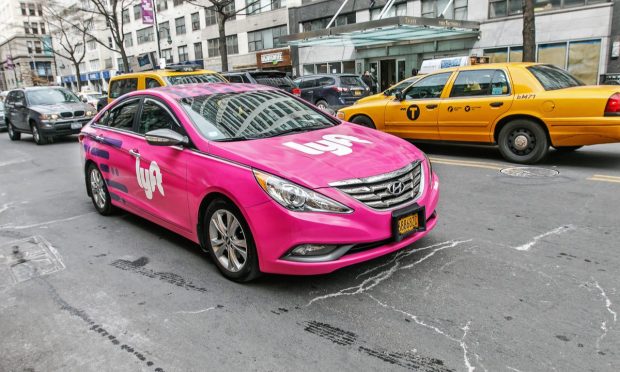Lyft Logs More Active Riders YoY, Talks Up Maps, AVs and More as Omicron Stifles Recovery

Mobility is moving again, evidenced by generally positive Q4 and fiscal 2021 results earnings on Tuesday (Feb. 8) from ride-hailing bellwether Lyft, even as other ride platforms — namely Uber — continue to expand beyond ride-hailing roots into other aspects of the connected economy.
Giving the gig economy snapshot, Lyft logged Active Riders of 18.7 million — an increase of 49% year-over-year — with new rider activations up 42% year-over-year. Active drivers rose by 34% year-over-year “driven in part by a ~50% increase in new driver activations versus Q4 2020.”
There were several wider trends between the lines of Lyft’s latest financials, from its hope for autonomous vehicles to indictors that air travel is recovering, albeit in fits and starts.
In what can be seen as good news for travel, incoming Chief Financial Officer Elaine Paul said, “the airport use case continued to recover, with airport rides in Q4 2021 more than doubling year-over-year.”
Talking through a series of initiatives, Lyft Co-founder and President John Zimmer outlined priorities including the development of Lyft Maps, Lyft Car Rentals, and the role bikes and scooters are playing in helping more consumers access and use the mobility platform.
See also: Differing Roads for Uber and Lyft as Pandemic Fades in Rearview Mirror
“Reservations for our first-party rentals doubled in Q4 ‘21 versus the prior year,” Zimmer said, calling it “a reflection of the focus we’ve put on building out our offerings and making them more discoverable by our riders. Our third-party integration has also been very successful driving, nearly half of all rental reservations booked through our system.”
On the R&D front, Lyft Maps is proving a bright spot in the portfolio. Saying its in-house mapping software will “optimize the entire Lyft experience,” Zimmer told analysts, “this includes tapping into data collected from Lyft rides to detect street closures and traffic delays and using that information to improve our overall routing capabilities.”
He said Lyft Maps began rolling out in select markets in 2021 and has “already powered more than 3 million rides. We are also partnering with Google to make the Lyft app and our proprietary mapping platform available on car displays that have Android Auto.”
Lyft Maps is expected to be widely available in summer 2022.
On the self-driving front, Co-founder and CEO Logan Green said that Lyft “expanded our industry leading autonomous vehicle partnerships and set ourselves up to win that long term transition,” referring to the sale of its Level 5 self-driving division to Woven Planet Holdings.
Zimmer said “The latest proof point is launch of our autonomous ride share service along with Ford and Argo AI in Miami. Fords AVs are powered by the Argo self-driving system and can be dispatched matched and routed to Lyft riders. Ultimately, we expect this partnership to scale to 1,000 vehicles across multiple markets by 2026.”
See also: Ride-Hailing Fares up 25% in Q3 Over 2019, but Uber, Lyft Riders Don’t Care
While reporting Q4 2021 revenue of $969.9 million versus $569.9 million in Q4 2020 — an increase of 70% year-over-year, and up of 12% from Q3’s $864.4 million — Lyft mostly faulted omicron disruptions and seasonal slowdowns in a Q4 that missed analyst’s expectations.
The company touted record revenue per Active Rider of $51.79 which increased 14% year-over-year as the result of “improving service levels and a larger mix of longer, higher revenue rides.”
But looking to the immediate future, Paul said that “prior to omicron we were anticipating strong sequential rideshare ride growth in Q1 [2022]. This was based on the demand trends we saw in Q4 [2021]. However, given the impact that omicron has had on ride share, we now anticipate ride share rides will be down slightly” in Q1 2022 compared to Q4 2021.
See also: Lyft To Sell Self-Driving Division To Woven Planet
